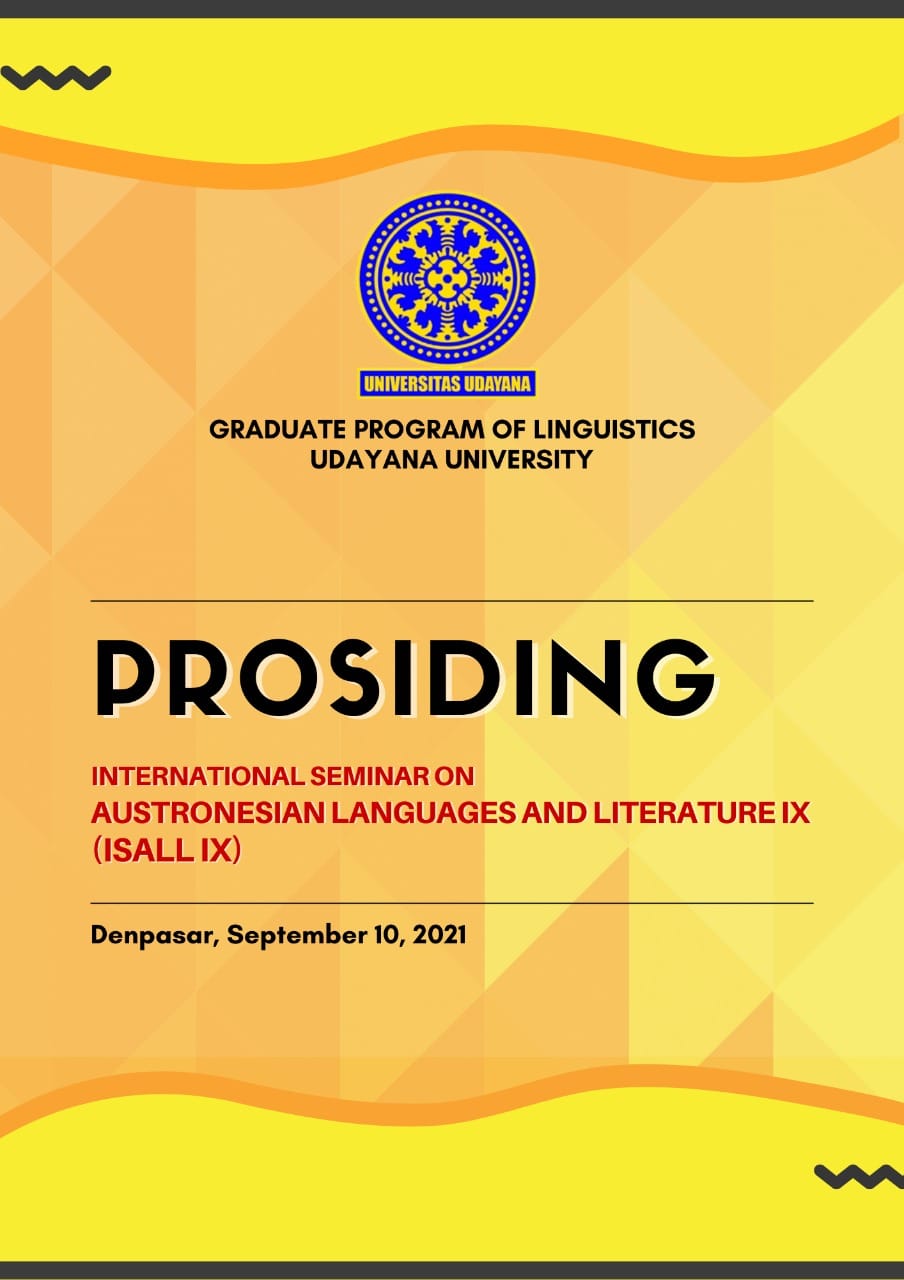Tuturan yang Berdampak Hukum Ditinjau dari Elemen dan Fungsi Konteks Sosial-Sosietal di Media Sosial Tik-Tok Indonesia
Abstract
This study aims to reveal speeches that are suspected of having legal implications as criminal acts of humiliation, defamation, SARA by using cyber pragmatics analysis. The cyber pragmatics analysis framework includes elements and functions of socio-social, cultural, and situational contexts and is used to examine 7 utterances originating from Tik-Tok in 2021. The research data are in the form of words, phrases, sentences, and paragraphs contained in speech in the TikTok application. . This study uses data collection procedures carried out to obtain the right data, which is able to provide answers to the problems contained in this study. To collect data, steps or steps are used, namely (1) collecting data in the form of content on the TikTok application; (2) sorting out speech that contains language that has legal implications according to the required data such as defamation, insult, and racial intolerance; (3) selecting data based on the focus of the problem that has been determined; (4) encode the content in the TikTok application, (5) describe the socio-social context of the language that has legal implications on TikTok; and (6) inferring the socio-social context of legal impacting language on TikTok. The data analysis in this study is content analysis, by analyzing the socio-social context of speech in the TikTok application that has an impact on the law. The findings of this study are the elements and functions of the socio-social context in language that have legal implications on social media related to elements of criminal acts
References
Creswell, J. W. (2010). Research design: pendekatan kualitatif, kuantitatif, dan mixed. Yogjakarta: PT Pustaka Pelajar
Hasiholan, Togi, P. dkk. (2020). Pemanfaatan Media Sosial TikTok sebagai Media Kampanye Gerakan Cuci Tangan di Indonesia untuk Pencegahan Corona
Covid-19. Jurnal Ilmu Komunikasi, 5(2), 70-80. https://doi.org/10.36341/cmv.v5i2.1278
Locher, M. A. (2013). Cyberpragmatics: Internet-Mediated Communication in Context. Journal of Pragmatics, 47(1), 128-130. https://doi.org/10.1016/j.pragma.2012.12.002
Rahardi, R. K. (2018). Elemen dan Fungsi Konteks Sosial, Sosietal, dan Situasional dalam Menentukan Makna Pragmatik Kefatisan Berbahasa. Seminar Tahunan
Linguistik 2018. http://repository.usd.ac.id/31870/1/4789_setali%2B2018%2Bkunjana.pdf.
Rahardi, R.K. (2019). Mendeskripsi Peran Konteks Pragmatik: Menuju Perspektif Cyberpragmatics. Transformatika: Jurnal Bahasa, Sastra, dan Pengajarannya, 3 (2), 164-178. https://doi.org/10.31002/transformatika.v%vi%i.2333
Rahardi. R.K. (2020a). Konteks Eksternal Virtual dalam Pragmatik Siber Virtual External Contexts In Cyberpragmatics. Jurnal LOA, 15(2), 154-165. https://doi.org/10.26499/loa.v15i2.2347
Rahardi, R. K. (2020b). The Shifts of Conventional Context Element Aspects : Towards a Cyberpragmatics Perspective. Jurnal Arbitrer, 7(2), 151–161. https://doi.org/10.25077/ar.7.2.151-161.2020
Rahardi, R.K. (2020c). Perlokusi Hoaks Covid-19: Perspektif Cyberpragmatics. LITERA, 19 (3), 471-486. https://doi.org/10.21831/ltr.v19i3.31469
Rahardi, R. K. (2018). Elemen dan Fungsi Konteks Sosial, Sosietal, dan Situasional dalam Menentukan Makna Pragmatik Kefatisan Berbahasa. Seminar Tahunan
Linguistik 2018. http://repository.usd.ac.id/31870/1/4789_setali%2B2018%2Bkunjana.pdf.
Sholihatin, E. (2019). Linguistik Forensik dan Kejahatan Berbahasa. Yogyakarta: Pustaka Pelajar.
Sorrels. (2015). Globalizing Intercultural Communication. California: Sage Publications, Inc.


